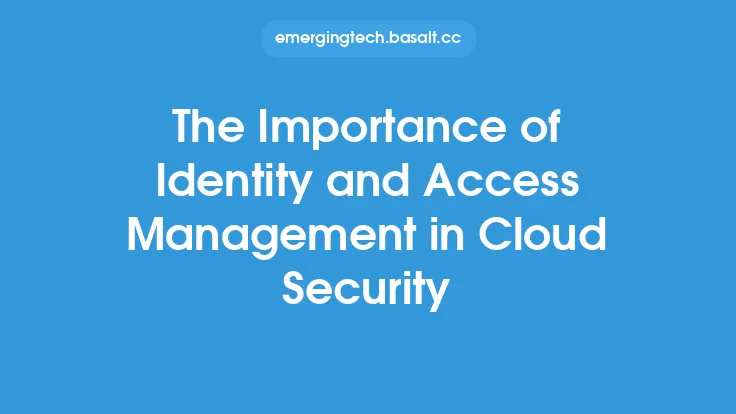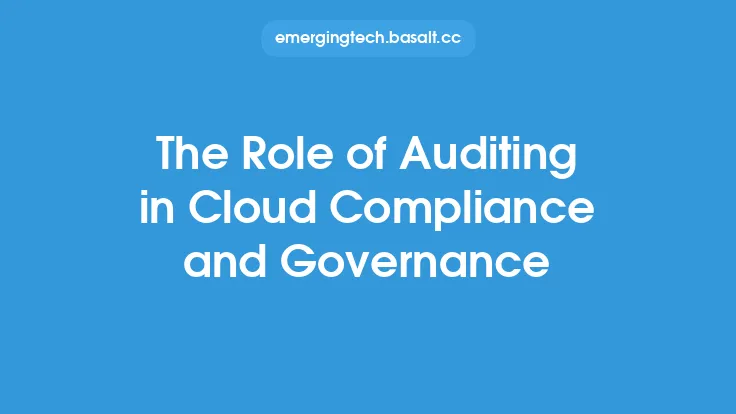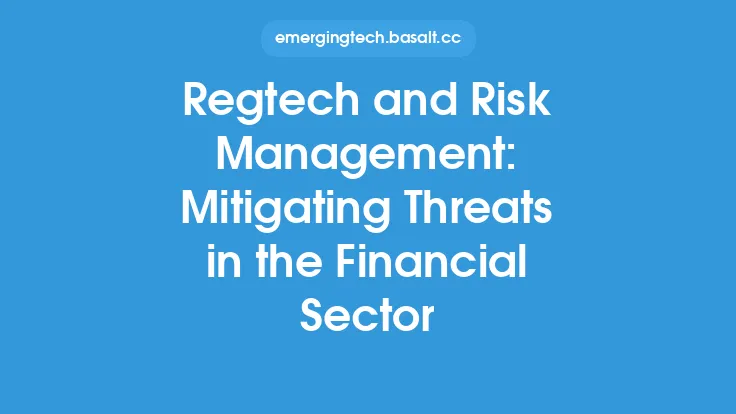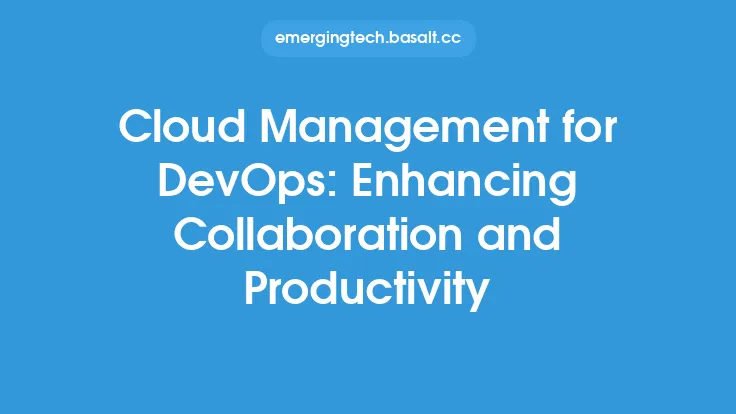The increasing adoption of cloud computing has transformed the way organizations operate, offering numerous benefits such as scalability, flexibility, and cost savings. However, this shift also introduces new challenges, particularly in the areas of compliance and risk management. As organizations migrate their data and applications to the cloud, they must ensure that they are meeting the necessary regulatory requirements and mitigating potential risks. In this article, we will delve into the world of compliance and risk management in cloud computing, exploring the key considerations, best practices, and technical requirements for ensuring a secure and compliant cloud environment.
Introduction to Cloud Computing Compliance
Cloud computing compliance refers to the process of ensuring that an organization's cloud-based infrastructure and applications meet the relevant regulatory requirements and industry standards. This includes compliance with laws and regulations related to data protection, privacy, and security, as well as adherence to industry-specific standards and frameworks. Cloud computing compliance is a complex and ongoing process, requiring continuous monitoring and assessment to ensure that the organization remains compliant.
Risk Management in Cloud Computing
Risk management is a critical component of cloud computing, as it involves identifying, assessing, and mitigating potential risks associated with cloud-based infrastructure and applications. Cloud computing risks can be categorized into several areas, including security risks, compliance risks, operational risks, and financial risks. Security risks include threats such as data breaches, unauthorized access, and malware attacks, while compliance risks relate to the failure to meet regulatory requirements. Operational risks include downtime, data loss, and system failures, while financial risks include costs associated with data breaches, compliance fines, and reputational damage.
Cloud Computing Security Risks
Cloud computing security risks are a major concern for organizations, as they can have significant consequences, including data breaches, financial losses, and reputational damage. Some of the most common cloud computing security risks include:
- Data breaches: Unauthorized access to sensitive data, resulting in data theft or exposure.
- Unauthorized access: Unauthorized access to cloud-based infrastructure and applications, resulting in data breaches or malicious activity.
- Malware attacks: Malicious software attacks on cloud-based infrastructure and applications, resulting in data breaches or system compromise.
- Denial of Service (DoS) attacks: Overwhelming cloud-based infrastructure and applications with traffic, resulting in downtime or system failure.
- Insufficient access controls: Failure to implement adequate access controls, resulting in unauthorized access to cloud-based infrastructure and applications.
Compliance Frameworks and Standards
Compliance frameworks and standards play a critical role in ensuring cloud computing compliance, providing a structured approach to compliance and risk management. Some of the most common compliance frameworks and standards include:
- ISO 27001: A widely adopted international standard for information security management systems.
- PCI-DSS: A standard for payment card industry data security, requiring organizations to implement robust security controls to protect sensitive payment card data.
- HIPAA: A regulation requiring organizations to implement robust security controls to protect sensitive healthcare data.
- SOC 2: A standard for service organization control, requiring organizations to implement robust security controls to protect sensitive data.
- NIST Cybersecurity Framework: A framework providing a structured approach to cybersecurity risk management, including identify, protect, detect, respond, and recover.
Technical Requirements for Cloud Computing Compliance
Ensuring cloud computing compliance requires a range of technical requirements, including:
- Data encryption: Encrypting sensitive data both in transit and at rest, to protect against unauthorized access.
- Access controls: Implementing robust access controls, including multi-factor authentication, to prevent unauthorized access to cloud-based infrastructure and applications.
- Network security: Implementing robust network security controls, including firewalls and intrusion detection systems, to protect against malicious activity.
- Monitoring and logging: Implementing monitoring and logging capabilities, to detect and respond to security incidents.
- Incident response: Implementing an incident response plan, to respond to security incidents in a timely and effective manner.
Best Practices for Cloud Computing Compliance and Risk Management
Best practices play a critical role in ensuring cloud computing compliance and risk management, providing a structured approach to compliance and risk management. Some of the most common best practices include:
- Conducting regular risk assessments, to identify and mitigate potential risks.
- Implementing a cloud security gateway, to provide an additional layer of security and compliance controls.
- Using cloud-based security services, such as cloud-based firewalls and intrusion detection systems.
- Implementing a compliance program, to ensure ongoing compliance with regulatory requirements and industry standards.
- Providing training and awareness programs, to educate employees on cloud computing compliance and risk management.
Cloud Service Provider (CSP) Compliance and Risk Management
Cloud service providers (CSPs) play a critical role in cloud computing compliance and risk management, as they are responsible for providing a secure and compliant cloud environment. CSPs must ensure that their cloud-based infrastructure and applications meet the relevant regulatory requirements and industry standards, and that they have implemented robust security controls to protect against potential risks. Some of the key considerations for CSP compliance and risk management include:
- Transparency: Providing transparency into their security controls and compliance practices.
- Certifications: Obtaining certifications, such as ISO 27001 and SOC 2, to demonstrate compliance with industry standards.
- Compliance programs: Implementing compliance programs, to ensure ongoing compliance with regulatory requirements and industry standards.
- Risk assessments: Conducting regular risk assessments, to identify and mitigate potential risks.
- Incident response: Implementing an incident response plan, to respond to security incidents in a timely and effective manner.
Conclusion
In conclusion, compliance and risk management in cloud computing are critical components of a secure and compliant cloud environment. Organizations must ensure that they are meeting the necessary regulatory requirements and mitigating potential risks, to protect against data breaches, financial losses, and reputational damage. By following best practices, implementing technical requirements, and using compliance frameworks and standards, organizations can ensure a secure and compliant cloud environment, and reap the benefits of cloud computing, including scalability, flexibility, and cost savings.





